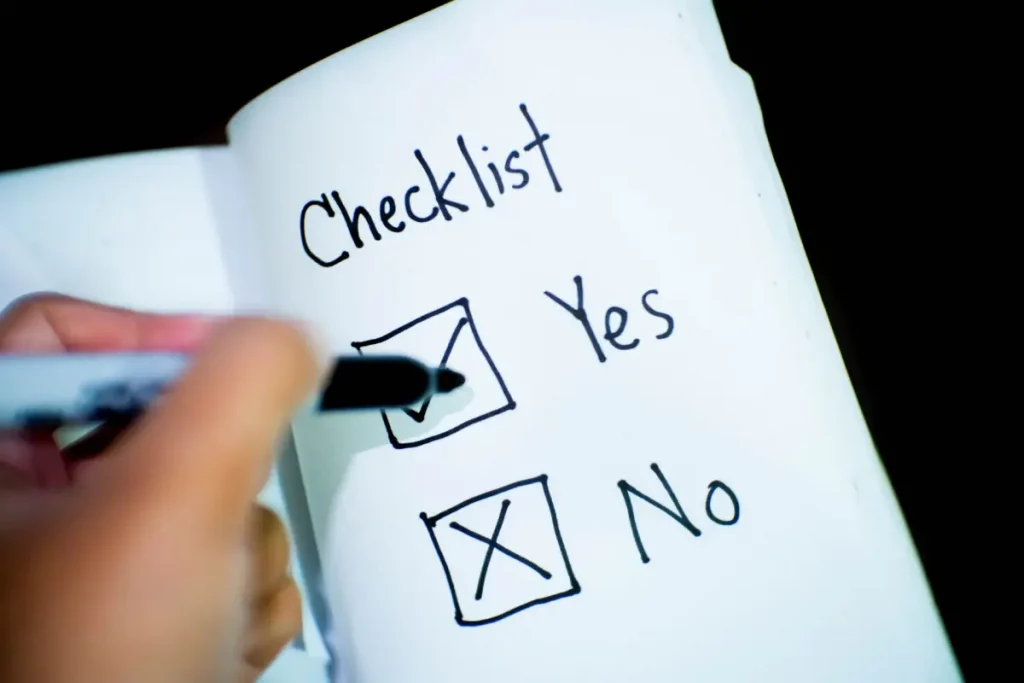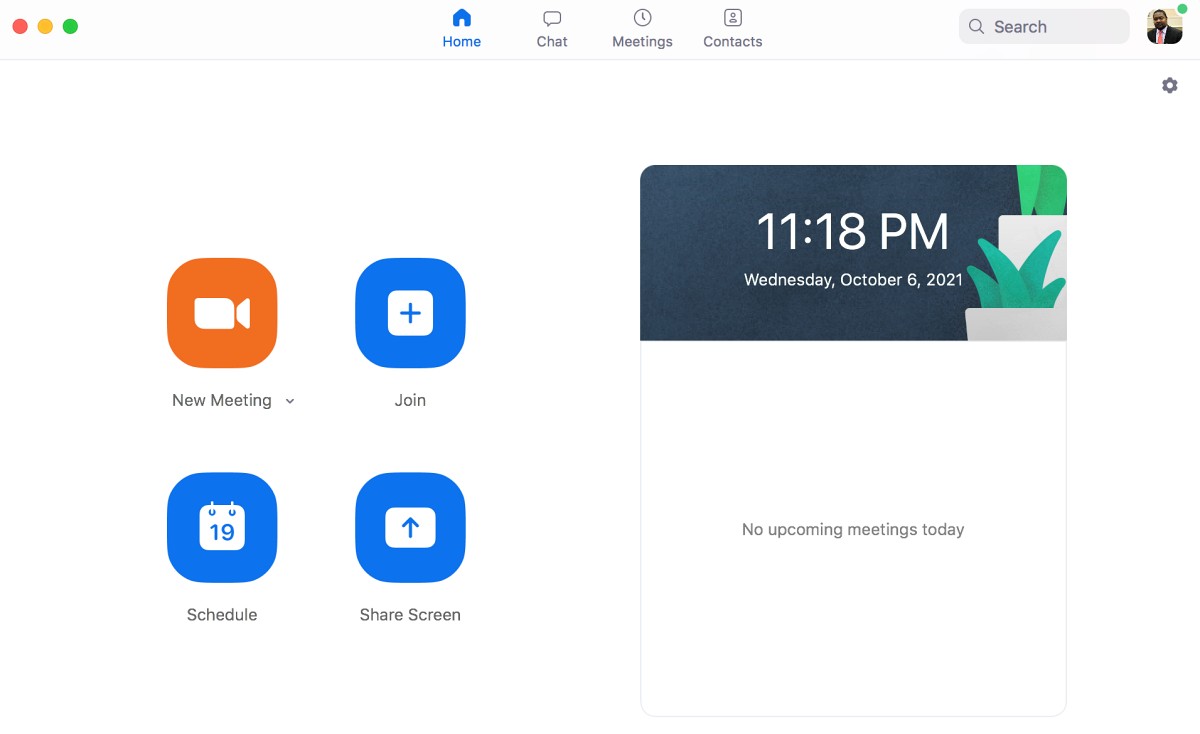Virtual meetings have dominated the professional workspace in the past 2 years with the repercussions of the Covid-19 pandemic. However, we all have experienced boring meetings without any productivity or impact at work or school. These dramatic experiences later gave rise to a virtual meeting best practices checklist that will guarantee speed and productivity.
A virtual meeting best practices checklist is a set of tasks one can follow before, during, and after a meeting. The best practices range from simple tasks like minimizing background noises to complex tasks like setting a meeting agenda. The tasks are designed in a way to maximize productivity, ensuring a fast-paced remote work environment.
Sound knowledge is required about specific tasks in this checklist to ensure maximum productivity. Hence, this article will reveal everything that you need to know about the best practices checklist and how to use them in the virtual world to ensure effective meetings that employees look forward to!
Virtual Meeting Best Practices Checklist

Best Practices to Follow Before a Meeting
The normal consensus around virtual meetings is that they are very easy to organize and host. One must only create an account on a communication platform and share the invite link for others to join. This unhealthy practice is the core reason behind the boring unproductive meetings we all face.
Careful planning and commitment are required to host a virtual meeting in the same way one plans a physical meeting. Here are the key tasks to follow;
Set an Agenda
This is the most important aspect that needs to be carefully planned before hosting a meeting. The quality of the meeting along with its productivity will heavily depend on the execution of this stage.
The hosts of the meeting must come together before planning a meeting and discuss the goals that must be achieved during the meeting. Asking the following questions will help in this stage;
- What do we expect from the meeting?
- What should be the primary outcome of the meeting?
- What information are we willing to share?
- Who should attend this meeting?
Finding answers to these questions will make you confident about your objectives for the meeting. Once you have known these objectives and goals, you can share them with the attendees to make sure everyone is on the same page.
Once this agenda is set, the next step of choosing the proper technology can be implemented.
Choose Appropriate Technology
The covid-19 pandemic gave light to many remote working technologies where tools like Zoom, Slack, Webex and Microsoft Teams dominated the market. In this step, one must spend time choosing the correct platform to hold the meeting.
The ideal platform would be a culmination of the objectives and goals of the meeting, meaning the platform will change according to your objectives.
As an example, a platform like Zoom would be a perfect fit to hold a normal sales meeting where one person presents the figures. On the other hand, a platform like Microsoft teams would be suited for meetings where brainstorming sessions are required.
Therefore, we have rounded off the different features of each platform to have a better idea;
| Key Aspect | Microsoft Teams | Zoom |
| Pricing | Teams can be used for free and as part of the Microsoft 365 package The free version has only a limited set of features The basic plan of this package costs $5 a month per user while the business package costs $12.50 a month per user | Zoom can also be used for free or as a premium service The pro version costs $14.99 a month per user while the business plan costs $19.99 a month per user. |
| Call duration | The free version offers 60 minutes Premium versions offer 24 hours | The free version offers 40 minutes Premium versions offer 30 hours |
| Participant capacity | Up to 500 | Up to 1000 |
| Recording feature | Only on paid plans | Available on all plans |
| Security | Has the best security given the parent company of Microsoft | Security is not as great as Teams with hacking incidents reported throughout the past 2 years |
Zoom takes the edge in a head to head comparison given its versatility and the simplicity the platform offers. However, Microsoft Teams would be the perfect fit for companies having a Microsoft 365 package. Zoom, on the other hand, would work perfectly for small to medium-scale companies that don’t rely on Microsoft.
Alternatively, you can watch this video about Zoom and Microsoft Teams;
Check the Technical Bits
By now, you should have formulated an agenda and chosen a meeting platform based on the agenda. The final step of the pre-meeting checklist is to ensure every technical aspect is covered to host a well-oiled meeting. The list includes the things a host and an attendee should do;
The host must make sure that all invitations are sent, and that attendees have confirmed their participation
- Check the internet connection before a meeting starts
- Charge the laptop to full power in case of a power outage
- Make sure there are no background noises during the meeting
- Check the visibility of the camera and remove any background distractions
Best Practices to Follow Before a Meeting
Once the above mentioned practices are followed before a meeting, the meeting will be guaranteed to progress smoothly. However, there are tasks you can do during the meeting to ensure productivity is at a high level.
Start With an Icebreaker and Have Regular Breaks
The key to having a productive meeting is to treat it as a physical one. Starting the meeting with an icebreaker or a fun activity to fend off the weekday blues would be a good way to start. These can be;
- Discussing a sports event that everyone is interested in
- Conducting a quiz
- Asking attendees to convey their current mood using emojis and gifs
- Taking a team photo
Long meetings should also have regular breaks included in the agenda. This will help attendees to maintain their confidence levels, resulting in higher productivity. Having a 5 to 10-minute break every 40 minutes would be ideal.
Also, watch these 9 tips on how to be more engaging in an online meeting;
Use virtual tools to brainstorm ideas
In the same way, a physical meeting would use a whiteboard to brainstorm ideas, a virtual tool is an essential time to boost productivity. Although many hosting platforms offer a virtual board, it may not be enough to get the productive output that you require.
There are many tools online that help in brainstorming where attendees can collaborate in real-time. The following platforms offer more interactive virtual boards that would be ideal for your virtual meeting;
- Ideaboardz for feedback – This free-of-charge tool can be used to obtain feedback from projects where attendees can comment and paste stickers with their ideas or feedback.
- Google Docs for simple brainstorming – Google docs is perhaps the most used collaborative tool worldwide. This too can be used as a very basic brainstorming tool where participants can work on the document together.
- bubble.us for mind mapping – The free version of this tool offers up to 3 mind maps. Participants can create text boxes and link them with each other in a large black space, making this an ideal mind mapping tool.
- Freeplane for organizing – Freeplane is a bit of a complex tool that offers a full brainstorming session. Users can set different mind maps, sync them all together and assign tasks, similar to a real-life whiteboard. This tool comes as free-to-use software.
- The brain for nonlinear ideas – The brain is designed in a way to work on your thoughts with a nonlinear work design. A team can use this tool when trying out a new project where they have to pool in thoughts and ideas. This software can be downloaded as well.
Use proper meeting etiquette
Virtual meetings are often taken for granted where people don’t give them the same importance as a physical meeting. Following a proper meeting etiquette routine can bring back professionalism while working remotely. Hence, we have come up with a table of Dos and Don’t that you and your teammates can follow during a meeting.
| Dos | Don’ts |
| Check your connection and hardware before every meeting A weak connection or having to log off because of a dead laptop is not professional | Do not do other tasks while in the meeting Typing while a meeting is going on or working on another project will be a sign of disrespect to your team members |
| Dress appropriately If the meeting is an official one, have a suit and a tie ready. Always dress to impress though you are stuck at home! | Avoid leisurewear during the meeting Do not attend meetings dressed in your pajamas or shorts as it could be perceived as unprofessional |
| Maintain eye contact If your camera is on for the entirety of the meeting, be sure to keep looking at the screen. This will show your level of engagement with your colleagues | Do not eat during meetings Having lunch or breakfast during a meeting will make you lose concentration and is advised not to unless it’s a simple snack |
| Be mindful of your screen and background Be sure that no distractions will happen off the screen to ensure a high level of professionalism | Minimize background noise Having too many background noises while you speak will be a hindrance to the listeners. Alternatively, always keep the microphone on mute at times that you are not speaking |
| Be understandable People who join meetings remotely can be living with many people, so have a level of understanding if there are many background noises or distractions | Don’t speak at the same time as others Productivity will be severely hindered if certain messages aren’t received clearly. Hence, always make sure that you don’t speak when another is speaking |
Best Practices to Follow After a meeting
By now, a successful meeting should have taken place after carefully setting an agenda and choosing the ideal hosting platform. However, there are still things to be done to maximize productivity after a meeting.
Make a quick summary
The key task is to compile a meeting summary and send them to the attendees. This will ensure that everyone understands what has been said during the meeting and the individual goals that each should follow. These can be done by;
- Setting a specific time for a wrap-up session before the meeting concludes
- Recording each meeting and sharing the key moments with specific people
- Sharing the brainstormed ideas in a common platform so every team member can visit it to refresh their memories
- Using collaboration tools like google docs and hangouts to open a group messaging board
Send follow-ups instead of writing minutes
Writing the minutes of a meeting is an age-old corporate practice. However, if you dare to go a step beyond this tradition for productivity, you will realize that setting up key tasks for each individual and following them up regularly will bring in more productivity.
This will also reduce the gruesome hours one has to transcript every single thing which is said at a meeting. Using tools like boomerang and Followup to schedule emails and set reminders will help you in the long run.
Frequently Asked Questions
- How do I keep a virtual meeting engaging?
Using interactive tools for presentations and using icebreakers will guarantee a very engaging meeting. One can use features like a live poll to see the popularity of an idea, a quiz to find the most engaged individual, or a lively group video mimicking something that can keep engagement levels at a high.
- How can I convince the audience about my ideas during a virtual conference?
The key element behind a convincing address is familiarity with the software. Using the hosting platform effectively by using all its features to keep the audience engaged and interactive is a great way to convince an audience. You can practice this by familiarizing yourself with the features of the platform before a meeting.
- What can I do if I don’t have a quality background?
You can always block your background using the tools offered by the hosting platforms. A platform like Zoom has plenty of background filters that you can use. Alternatively, you also can blur your background using Microsoft Teams.
Learn More about Video Conferencing and Tools
-
10 Benefits of Video Conferencing and Virtual Meetings

The COVID pandemic accelerated the digitalization of many business and educational institutions. We should feel blessed that we are living in a technological time, where we have a way to
-
6 Key Tips for Conducting a Successful Video Conference

During the outbreak of this deadly covid-19 pandemic throughout the world, the importance of video conferencing has emerged as a key strategy to stay connected and being productive, and organizations
-
Advantages And Disadvantages Of Using Zoom

Learn the potentials and limitations of the Zoom app by reading this informative article! In this hyper-competitive market of businesses, companies need to do a lot of meetings and host
Conclusion
Conducting and participating in virtual meetings is a gruesome task and we hope the checklist we have provided will help you and your team to be more productive. Don’t forget to follow proper meeting etiquette during a meeting and don’t be afraid to do something fun too!
References
Virtual meeting best practices https://biz30.timedoctor.com/virtual-meetings-best-practices/#after-the-meeting
Virtual meeting icebreakers
https://blog.sli.do/virtual-icebreakers/
Virtual meeting etiquette
